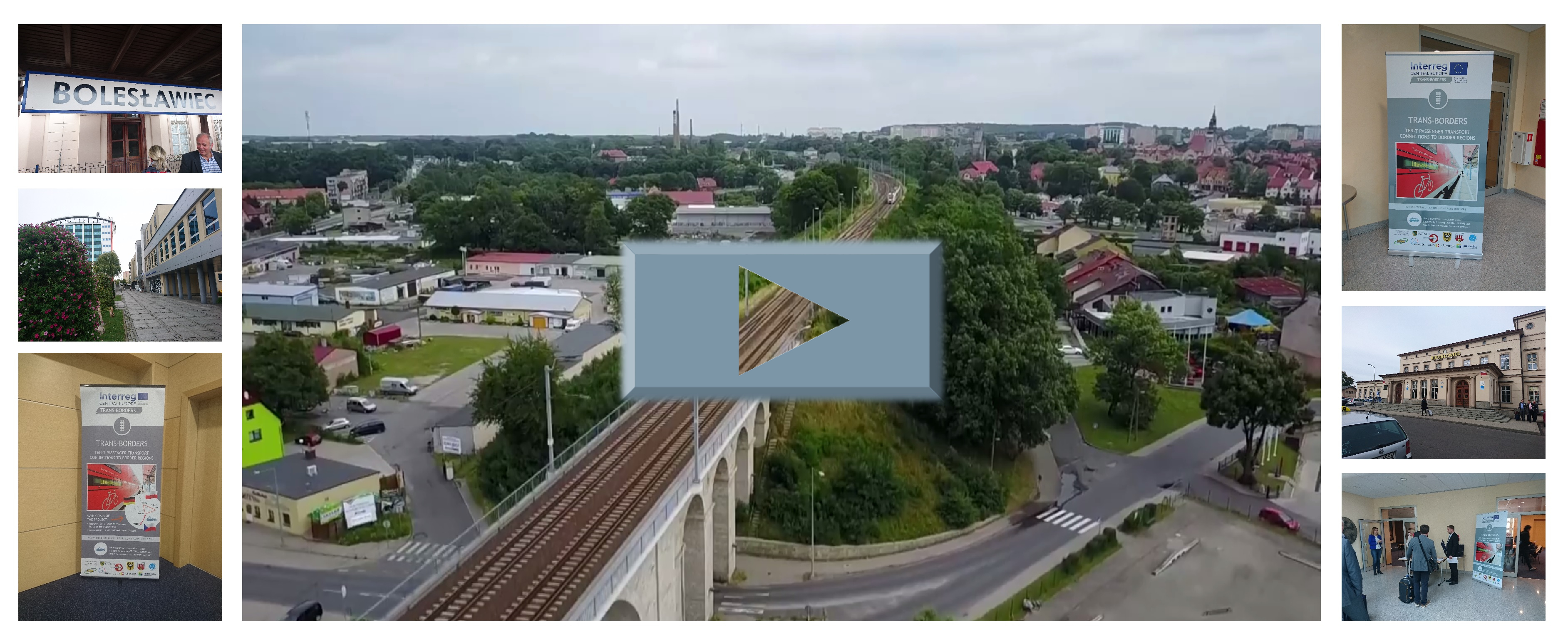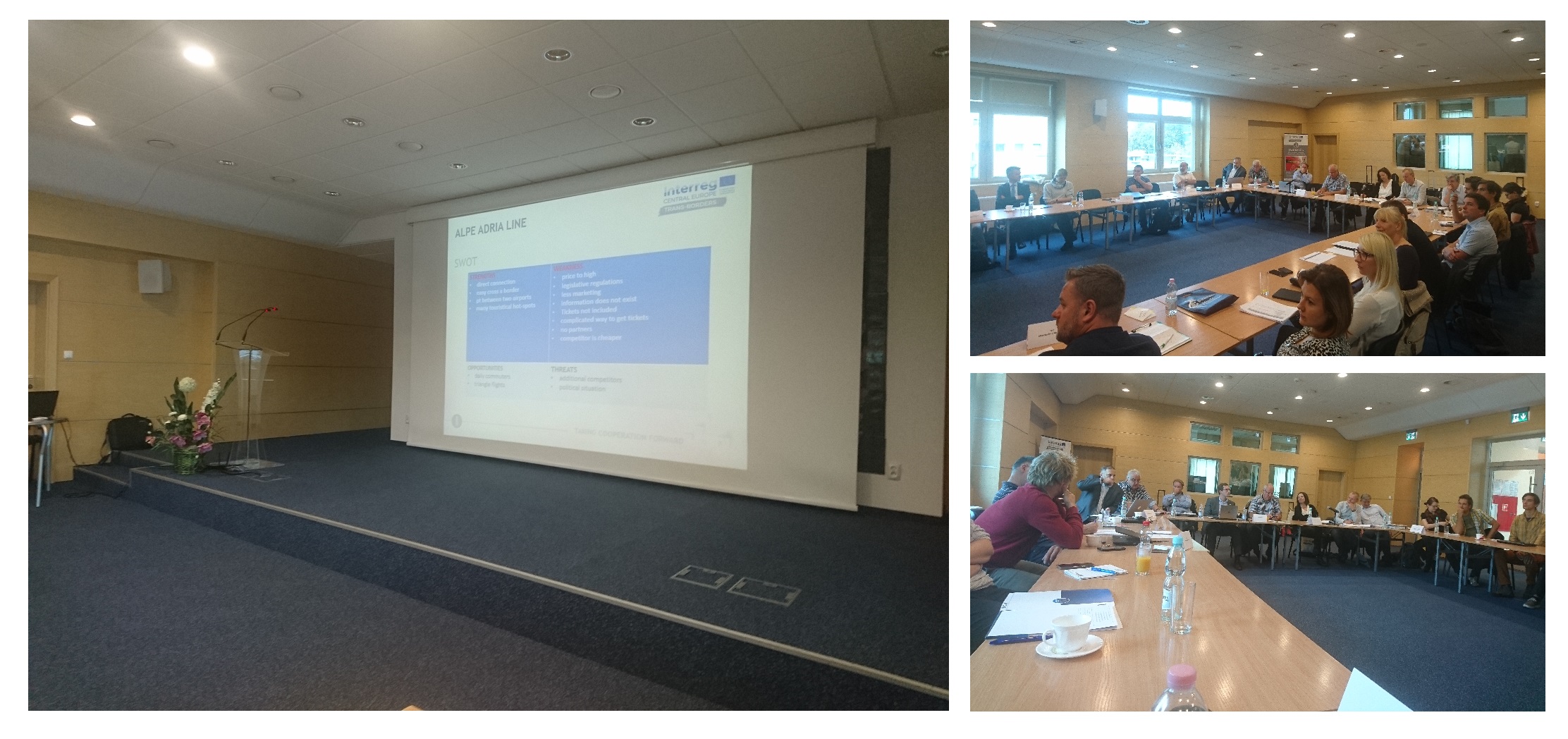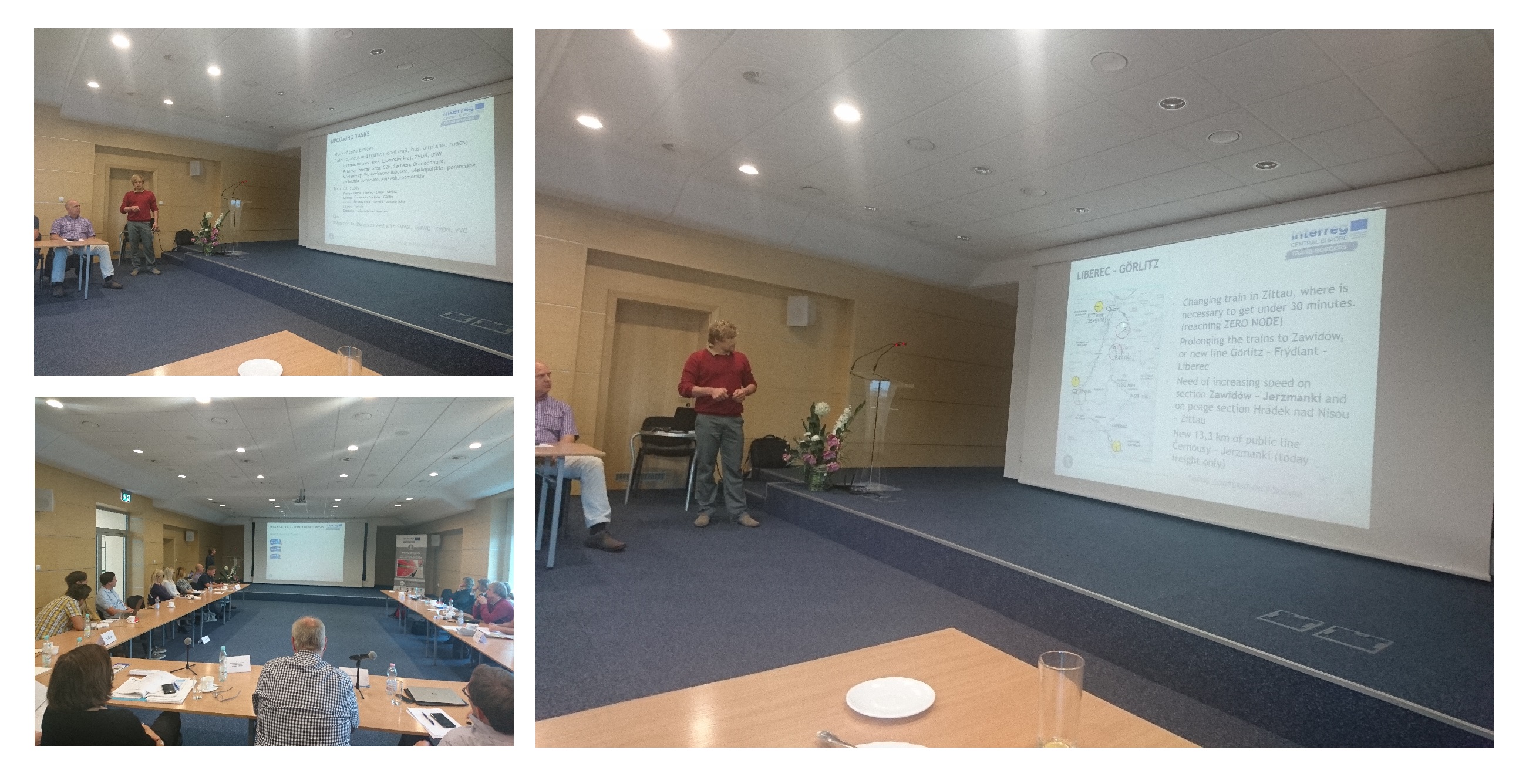Third Partner Meeting in Bolesławiec, Poland
The TRANS-BORDERS consortium met on 26th and 27th September 2018 for the third partner meeting in Bolesławiec. The meeting was on the one hand intended to prepare the upcoming Mid-Term Conference. On the other hand, the partners were given the opportunity to exchange information on the current progress of the project.

Within the ambience of the Cultural Centre Międzynarodowe Centrum Ceramiki Mr Rzepnicki to Bolesławiec, the Lower Silesian town famous for its bunzlauer pottery warmly welcomed the partners. A fact that our Steering Committee would meet again later.
During the organisational part, mainly the general work progress and communication measures were discussed. Above all, the project partners got final information of the Mid-Term Conference. Furthermore, it was necessary to define the contents of the selected topics of the conference in order to give our guests as varied an offer as possible about our main research areas.

The main topic guiding through the two-day meeting was the presentation of the work progress, especially regarding to the pilot projects and the regional action plans.
Ms Agnieszka Zakęś started presenting the regional action plans of the regions Lower Silesia and the region Liberec respectively between Lower Silesia and Saxony. Due to the location of the regions within the European transport network, it is, in her opinion, essential for the development of the regions to improve the connection of the border triangle to Wroclaw, Prague and Dresden. The Marshal Office of the Lower Silesian Voivodship identified a number of problems to be solved, including the state of the infrastructure amongst other things. They have also located unused (historical) train paths, which would improve mobility within the regions if they were reactivated. Furthermore, Ms Zakęś presented actions to be initiated within the project. These include an intensification of lobbying on the political level, with infrastructure operators and operators, in order to be able to solve the problems together and coordinated. Closer cooperation with other areas, for example with tourist agencies and economic agencies, for the targeted development of transport services should also be sought.

Our colleagues from the southern border region of Carinthia and Koroška then presented the fields of action of cross-border passenger transport investigated so far, in particular, the progress made in setting up the regional action plan. Within this framework, the bus connection between Lavamünd and Maribor as well as the train connection from Maribor to Klagenfurt will be examined. The bus service launched in March 2014 faced many obstacles. A strong competitive situation, weak marketing, a complicated way to get tickets and legislative regulations led to the closure of the line in July 2018. A study was carried out for the train connection from Klagenfurt via Bleiburg to Prevalje. The study is now to be agreed between the partners.
In the cities of Lavamünd and Bleiburg plan the creation of mobility nodes. Our partners reached so far a cooperation agreement with Mahle, the largest employer in the region with a total number of 3,000 employees. 36 measures were worked out, which will be incorporated into the mobility concept. Among other things, these include adjustments to timetables, a strengthening of bicycle traffic through the establishment of bicycle service boxes and opportunities for changing clothes or marketing of the carpooling concept.

In order to better connect eastern Saxony and Lower Silesia with the TEN-T nodes Dresden and Wrocław, TRANS-BORDERS investigates the train connection between the Saxon state capital and the Lower Silesian Voivodeship capital. In particular, the improvement of travel times and the comfort for the passengers are in the foreground, whereby also more far-reaching measures and goals are investigated. This train connection, which had an eventful past from operation to decommissioning, is particularly in great political tension. On the one hand, the direct connection will be discontinued in December 2018. The regional express from Dresden will in the future run to Wegliniec and there will be a connecting train of the Polish transport company to Breslau. On the other hand, the infrastructure on both sides of the border has been developed differently: While the Polish side has almost completed electrification of the track and modern and faster vehicles can be used, eastern Saxony is waiting for the electrified railway line.
To gain more popularity on the German side for the electrification, we conducted a study analysing the benefits of electrification of the railway line Dresden – Wrocław. This study was now presented to our project partners for the first time. In contrast to the status quo, a scenario with the operation of electric vehicles is described and the effects on travel time savings, efficiency and operating costs as well as environmental pollution were investigated.
The study concludes with an appeal, that the electrification brings high environmental, operational and economic benefits and strengthens European cohesion and opens up new opportunities in many areas. An electrification of the railway line between Dresden and Görlitz is very important for the border triangle Germany, Poland and the Czech Republic especially for possible future long-distance rail passenger connections and freight transport. It shall also be noted that without electrification no direct cross-border connections between Görlitz or Dresden and the polish destinations are possible if the polish side uses electric railcars for the operation.

Another field of investigation is the route "Görlitz – Liberec - Turnov". This track is investigated in two sectors: The first section between Görlitz and Liberec and then further to Turnov. In addition to improving the existing connection, on which a change is necessary and on which the timetable would have to be adjusted to get connections, it is also necessary to examine whether a new line from Görlitz via Frýdlant to Liberec should be created. This would also have the advantage that the development of the area would increase. The section from Liberec to Turnov is being investigated with a view to saving travel time.
The border triangle of Germany, Poland and the Czech Republic already has a well working and gradually expanding cross-border tariff system: The Euro-Neisse-Ticket. In the Liberec region, TRANS-BORDERS intends to create an improve tariff offers. Public transport services in the Liberec region is primarily used by tourists and commuters. A tariff system for commuters could build on the existing tariff in the Integrated Transport System of the Liberec Region. For tourists, the Euro-Neisse ticket would be an obvious option. Now it is up to our partners to make these two approaches compatible.

To round off the two intensive days, the city of Bolesławiec presented the plans for the future mobility centre. The planned mobility centre will be the first one in Lower Silesia. It will be the first one in Lower Silesia and will be not only oriented to regional cross-border connectivity; the transfer centre will greatly improve communication in the region. The transfer centre will be based around the railway station and adjacent areas, connecting various transport systems (railway, long-distance and city buses, and taxis). Equipped with modern communication solutions, check-in desks with the necessary travel information equipment, parking slots and service points, it will significantly improve local, regional and international passenger traffic. Through the creation of an integrated transport centre, it will be possible to eliminate the previously scattered stops, which will all be located in a central location in the future. This innovative approach is also planned to be transferable to other comparable cases on transnational level.
In order to gain an idea, our colleagues organised a city tour, which included a visit to the location of the future mobility centre. The cultural conclusion of the two days was the visit to the Ceramics Museum.

